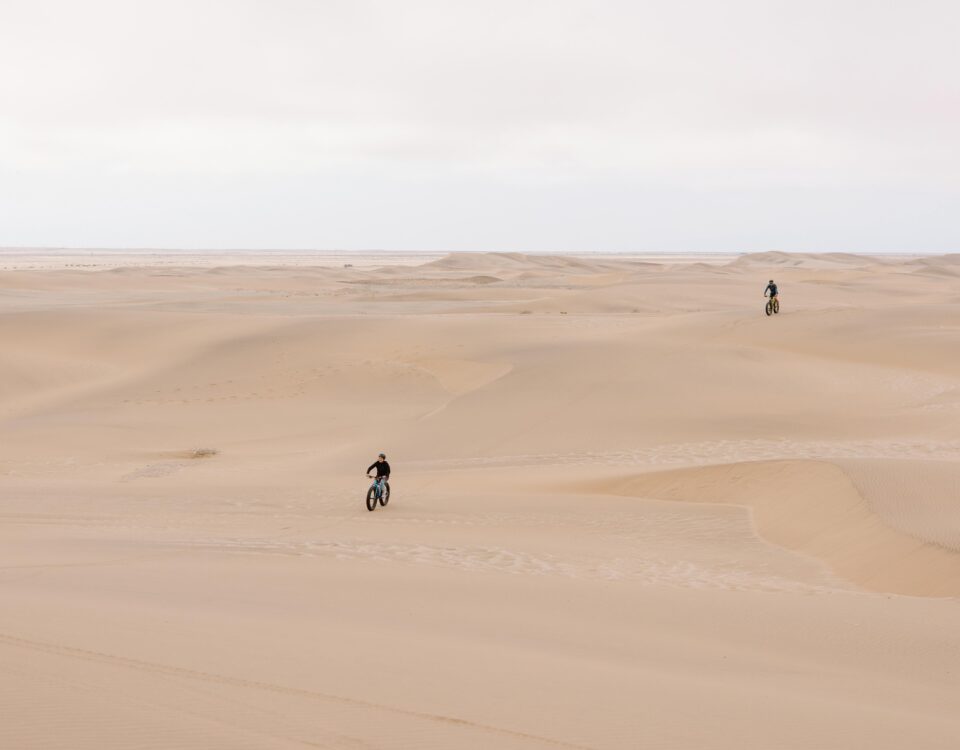Swakopmund, Namibia – Mondesa Township Tour
August 31, 2012Tsauchab River Camp: On the edge of Sossusvlei
August 31, 2012by Ron Swilling
A 27-million-year old fossil, meteorite chunks, fossilised wood and jawbones of our human ancestors mingle with Spanish coins, restored ox wagons and turn-of-the-century drawing rooms.
Walking through the Swakopmund Museum takes you travelling through time, from ancient earth memories to a more recent colonial past. Situated on the seafront between avenues of palm trees, this treasure house holds a multitude of interesting artefacts. A large airy hall houses a People of Namibia exhibition with information on the diverse and distinct groups of Namibia. Baskets, headdresses, amulets and ostrich eggs fill the many display shelves. Carved drums and rattles beckon from the centre of the room. With a dugout canoe, funnel-shaped fishing baskets and a large woven granary basket, they generate a vibrant and fascinating African atmosphere.
Recently renovated, the museum now has a new and enlarged entrance area facing the Atlantic Ocean and the Mole, a popular swimming beach. A small and quaint pub once housed in the old breweries, the Alte Brauereistube has been added to one side of the building. The main sponsors for the renovations and alterations of the museum complex are Namibia Breweries Ltd and the Herman Ohlthaver Trust, with further donations received from members and friends of the Scientific Society and Namibian businesses. The facelift is a pleasing and attractive addition to both the Swakopmund museum and the beachfront.
Entering the foyer area with its new museum shop is the beginning of hours of discovery as visitors move through the different exhibits, starting with Swakopmund’s old water pump, once situated on the banks of the Swakop River to supply residents with household water, and Swakopmund’s oldest pharmacy, Adler’s Apotheke, established in 1909.
An archaeological section with a jaw-bone of the ‘Otavi ape from Namibia’ – the only evidence of a fossil hominoid from the Miocene period to be discovered south of the equator, dating back to between 22–5 million years ago – lies unassumingly between stone-age tools and axes chiselled by our human ancestors. A large hall below houses natural history exhibits, an original ox wagon, military memorabilia, and various flotsam and jetsam. Information on the legendary shipwrecks of the Skeleton Coast and Diego Cão’s landing on Namibian soil is displayed between model ships and Spanish coins.
A black rhino and chacma baboon look onto a display of cannon barrels and a tall woven basket used to carry disembarking passengers off ships. Amethyst geodes, an enormous elephant and hippopotamus skull, a Namibian vegetation exhibit, eggs and shells, are a few of the many items in this treasure house that hold the interest and fascinate the mind.
Stepping into the past is an interesting and pleasurable way to spend a misty afternoon in Swakopmund. A short visit may end up as a long journey, as history and earth time merge into millennia upon millennia, their stories fascinating enough to take you into other worlds and different time zones.
This article appeared in the Feb/March ‘08 edition of Travel News Namibia.

